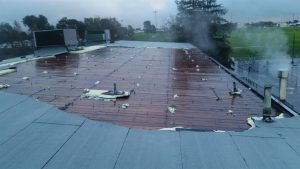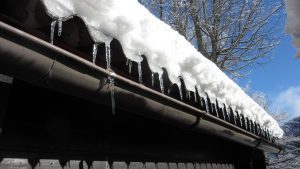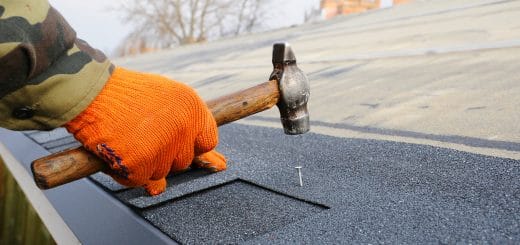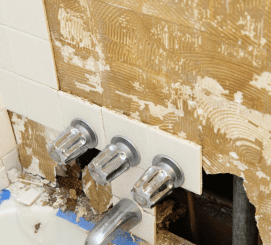How Do You Fix a Sagging Roof?
Low dips on the rooftop are indicative of structural problems. Simple DIY solutions might fix the issue, but most often, property owners will need to call in the roofing contractors. Repairing a sagging rooftop requires comfort working at heights and, simultaneously, advanced carpentry skills.
How do you fix a sagging roof?
If the cause of the sagging roof is water damage, the source of the water damage must be addressed first. Water along the rooftop should be directed away with metal flashings installed on the valleys and junctions of the roof. Ensure the shingles and roofing materials are in good condition.
A damaged gutter system leads to water leakage and, inevitably, a sagging roof. RepairRepair is the act of fixing or restoring damaged property, m... More the dilapidated gutter as soon as possible to avoid issues later on. A poorly designed gutter should be replaced to prevent water from pooling on the roof and the resulting water damage that causes sagging.
If the roofing materials are not in good condition, replace the shingles and flashing. The sagging may be directly repaired with the installation of angled braces that shore up the rafters. Alternately, add support to the walls with chains attached to the wall plates.
Why do roofs sag?
Taxing weights add immense pressure to the roof structureStructure refers to the framework or components of a buildin... More. Common elements that add weighty loads to the roof are snow, ice and even wind. Without sufficient structural support to sustain the weight of nature’s elements, over time, the roof is likely to respond by sagging.
Water damage from rain and snow can leadLead is a heavy metal that can be toxic to humans, especiall... More to a sagging roof. The roofing structureStructure refers to the framework or components of a buildin... More should be in good condition to allow adequate water runoffRunoff is water from rain or other sources that flows over s... More from the shingles. Damage to the roof’s surface permits an entryway for water and the subsequent weakening and sagging of the rooftop.
Excess weight along the roof can occur from snowfalls. Especially in cold climates, when snow sits for prolonged periods of time on the roof, the structureStructure refers to the framework or components of a buildin... More will give way. Every roof is designed to support a certain amount of weight; anything above this weight will cause the roof to sag.
Structural issues, too, can leadLead is a heavy metal that can be toxic to humans, especiall... More to dips in the roof. Improper design and construction are culprits. The roof might sag when its structural components undergo damage. Failures to the roof’s supporting structures, like the property’s walls, also leadLead is a heavy metal that can be toxic to humans, especiall... More to dips in the roof. An aged roof is likely to sag.
Poor quality roofing materials are prone to weather and water damage, resulting in a rapidly deteriorating roof. High quality roofing materials endure longer; but even these roofs only have an average lifespan of 15 to 30 years, depending on the area’s climate and roof design.
Additionally, a property’s foundation might have shifted or sunk, causing the walls to shift. Cracks in the foundation are indicative of these dire shifts in the foundation. An unavoidable outcome of a shift in the foundation and walls include a sagging rooftop.
How do you safely remove snowfall?

If the roof sags due to heavy snows, clear the roof of snowfall. Use a roof rake to remove lighter snow. Incorrect snow removal can damage the roof, cause water damage and leadLead is a heavy metal that can be toxic to humans, especiall... More to further sagging. Consider call in roofing pros when dealing with heavy snowfall.
A properly designed roof should be able to sustain its own weight. Design flaws, however, can leadLead is a heavy metal that can be toxic to humans, especiall... More to weight-related dips in the roof. If the flaws are due to insufficient sheathing along the areas it covers, the solutionA solution is a homogeneous mixture of two or more substance... More is to replace the thin sheathing with thicker ones.
Should you replace inappropriate roofing materials?
Every roof is designed to carry a maximum weight. Installing new, heavier roofing materials or multiple layers of shingles can cause rooftop sagging, even on well-built roofs. The ideal fix is to remove all the excessive shingles and replace them.
On the other hand, a property owner might replace the shingles with materials that are inappropriate for the roof’s acceptable weight limit, such as installing clay tiles in lieu of wooden shingles. If the roof sags under the weight of clay, revert to lighter materials.
How do you repair decomposing roofs?
Rotting joists can leadLead is a heavy metal that can be toxic to humans, especiall... More to structural issues and subsequent sagging along the roof. Structural problems and decomposition may be repaired by tearing out the damaged roof, performing repairs and then filling the cavity. During the installation process, the flashing should be inspected for damage.
How do you fix foundation damage?

When the sagging roof is due to foundation damage, the latter must be addressed first. Poor drainage is a common cause of foundation ruin. A remedy for insufficient drainage is to ensure that the downspouts and gutters direct water away from the foundation by at least three feet.
The foundation may also drop as a result of nearby tree roots. The roots absorb moisture in close proximity to the foundation, leading to soil shrinkage. The foundation inevitably drops, leading to a sagging or wavy roof. Remove the tree roots near the foundation to start resolving the roof issue.
Contact a Professional Roofing Contractor
A commercial roof has an important connection to the foundation below it. When the foundation unsettles, the roof will be affected. Similarly, the number of aforementioned factors, from water damage to roofing materials, influence the health of the roof. Consult Reliable Roofing when your roof sags.
As an experienced roofing contractor, Reliable Roofing will repairRepair is the act of fixing or restoring damaged property, m... More your sagging roof quickly and efficiently. Our trained roofing technicians perform a range of commercial roofing services, including storm damage repairRepair is the act of fixing or restoring damaged property, m... More, leak repairRepair is the act of fixing or restoring damaged property, m... More and preventionPrevention refers to actions taken to reduce the likelihood ... More, roof restorationRestoration is the process of returning a property to its pr... More and shingle repairRepair is the act of fixing or restoring damaged property, m... More and replacement.
Companies place full trust in Reliable Roofing and our comprehensive roofing services. Our roofing contractors are licensed, bonded and highly skilled. We partner with the industry’s leading roofing manufacturers, and we use only high-quality materials in every project we undertake.
When your commercial property in the Chicago suburbs is in need of a local, reputable commercial roofer, turn to Reliable Roofing. We take pride in the countless satisfied businesses we have served. Reliable Roofing specialists respond to calls within 24 hours, ensuring your roof receives immediate attention.












